
Highest Mountains
by Hans
This article lists the highest mountains of the world and some of their prominent subpeaks.
Eight-Thousander (8000 meter peaks)
The fourteen independent highest mountains on Earth
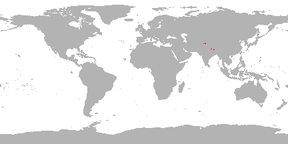 The eight-thousanders are the fourteen independent mountains on Earth that are more than 8,000 metres above sea level. They are all located in the Himalayan and Karakoram mountain ranges in Asia. The generally accepted list of fourteen eight-thousanders is obtained if one uses a topographic prominence cutoff between 200 and 500 metres.
The eight-thousanders are the fourteen independent mountains on Earth that are more than 8,000 metres above sea level. They are all located in the Himalayan and Karakoram mountain ranges in Asia. The generally accepted list of fourteen eight-thousanders is obtained if one uses a topographic prominence cutoff between 200 and 500 metres.
Seven-Thousander (7000 meter peaks)
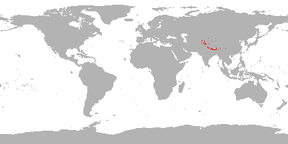 Jill Neate's great book "High Asia: An Illustrated History of the 7,000 Metre Peaks" provides a lot of information on each of the over 400 known peaks between 7000 and 8000 metres. It contains detailed summaries of their location, access and routes, together with descriptions of their individual histories of exploration and ascents.
Jill Neate's great book "High Asia: An Illustrated History of the 7,000 Metre Peaks" provides a lot of information on each of the over 400 known peaks between 7000 and 8000 metres. It contains detailed summaries of their location, access and routes, together with descriptions of their individual histories of exploration and ascents.
Peaks over 7000 m are located on the asian continent only. Most of them are placed in the Himalaya and Karakoum moutain ranges with its highest 7000 m peaks Manaslu East (7992 m) and Gasherbrum IV (7980 m). Other mountain ranges with peaks over 7000 m are Pamir with its highest peak Kongur (7719 m), Hindu Kush with its highest peak Tirich Mir (7708 m), Daxue Shan with its highest peak Minya Konka (7590 m), Tien Shan with its highest peak Tomur Feng (7439 m) and Kunlun Shan with its highest peak Aksai Chin (7167 m).
Six-Thousander (6000 meter peaks)
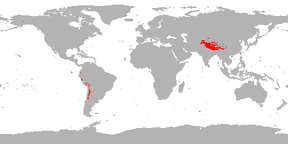 There are only two mountain ranges outside the Asian continent where peaks over 6000 m are located: The Alaska Range with its highest peak Mount McKinley (6193 m) and the Andes with its highest peak Aconcagua (6962 m). While Mount McKinley is the only peak over 6000 m on the North American contient, there are 102 peaks over 6000 m on the South American continent. They all have a topographic prominence of at least 400 m. By contrast the asian continent counts a few thousand peaks over 6000 m.
There are only two mountain ranges outside the Asian continent where peaks over 6000 m are located: The Alaska Range with its highest peak Mount McKinley (6193 m) and the Andes with its highest peak Aconcagua (6962 m). While Mount McKinley is the only peak over 6000 m on the North American contient, there are 102 peaks over 6000 m on the South American continent. They all have a topographic prominence of at least 400 m. By contrast the asian continent counts a few thousand peaks over 6000 m.
Five-Thousander (5000 meter peaks)
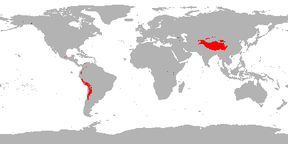 If the Caucasian mountains belong to Europe there are 5 continents with peaks over 5000 m: The Asian continent, North and South America, Africa and Europe. While the 5000 m peaks in Asia - particularly Himalaya and Karakorum - reache uncountable numbers, other regions with 5000 m peaks keep manageable. The Andes count more than 800 peaks over 5000 m, Alaska and Canada count about 30 or 40, Africa about 10, the Caucasian mountains about 20 and the Elbruz mountain range counts only one peak over 5000 m.
If the Caucasian mountains belong to Europe there are 5 continents with peaks over 5000 m: The Asian continent, North and South America, Africa and Europe. While the 5000 m peaks in Asia - particularly Himalaya and Karakorum - reache uncountable numbers, other regions with 5000 m peaks keep manageable. The Andes count more than 800 peaks over 5000 m, Alaska and Canada count about 30 or 40, Africa about 10, the Caucasian mountains about 20 and the Elbruz mountain range counts only one peak over 5000 m.
The following list describes mountain ranges where the number of 5000 m peaks keeps manageable and where the highest peak is between 5000 m and 6000 m. Therefore the Alaska Range, the Andes and the ranges close to the Himalaya are not itemized. Despite this assumptions there remain still 11 independent ranges with a main peak higher than 5000 m.
• The Saint Elias Mountains is a mountain range of Alaska and Canada. The highest peak of the range is Mount Logan (5959 m). Other major peaks higher than 5000 m are Mount Saint Elias (5489 m), Mount Lucania (5226 m), King Peak (5173 m), Mount Steele (5073) and Mount Bona (5005 m).
• The Trans-Mexican Volcanic Belt also known as Cordillera Neovolcánica is a volcanic belt that runs 900 km east-west across central-southern Mexico. The major peaks are Pico de Orizaba (5636 m) and Popocatépetl (5426 m).
• The Sierra Nevada de Santa Marta is an isolated mountain range apart from the Andes in the northern part of Colombia. Reaching an altitude of 5,700 metres above sea level just 42 km from the Caribbean coast, the Sierra Nevada is the world's highest coastal range. The highest point of the Santa Marta group may be either Pico Cristóbal Colón (ca. 5700 m) or Pico Simón Bolívar (ca. 5700 m); it has never been determined which of the twin peaks is higher. SRTM data and local topographic maps show that their true elevations is lower than the often quoted height of 5775 metre.
• The northern part of the Andes - mainly located in Ecuador and Colombia - is devided into three ranges: The Cordillera Occidental in the west, the Cordillera Central in the middle and the Cordillera Oriental in the east. While Cordilliera Occidental reaches elevations above 6000 m with Chimborazzo (6268 m) as its highest peak, the highest peak of Cordillera Central is Cotopaxi (5897 m) located in Ecuador. Other major peaks of Cordillera Central with elevations above 5000 m are Nevado del Huila (5390 m), Nevado del Ruiz (5300 m), Nevado del Tolima (5280 m) and the Snow Mountain of Quindio (5150 m) which are located in Colombia and Antisana (5753 m) and Cayambe (5790 m) which are located in Ecuador. The only peak with an elevation above 5000 m of Cordillera Oriental is Ritacuba Blanco (5410 m) located in Colombia.
• The Caucasus Mountains is a mountain range in Eurasia bordered on the north by Russia, on the southwest by Turkey, on the west by the Black Sea, on the east by the Caspian Sea, and on the south by Iran. The highest peak is Mount Elbrus (5642 m). Other high peaks are Pik Pushkin (5100 m) and Gora Kazbek (5034 m).
• The Armenian Highland - also known as the Armenian Upland or Armenian Plateau - is part of the Transcaucasian Highland and constitutes the continuation of the Caucasus mountains with it's highest point Mount Ararat ( 5165 m).
• Alborz also written as Alburz or Elburz is a mountain range in northern Iran stretching from the borders of Armenia in the northwest to the southern end of the Caspian (Mazandaran) Sea, and ending in the east at the borders of Turkmenistan and Afghanistan. The highest mountain, Mount Damavand (5610 m), is located in the Middle East of the range.
• The Ruwenzori Range, now officially called Rwenzori Mountains is a small but spectacular mountain range of central Africa with its highest point Mount Rwenzori (5109 m), located on the border between Uganda and the Democratic Republic of the Congo.
• The Mount Kenya Massiv is the highest mountain range in Kenya with Mount Kenya (5199 m) as the second-highest peak of Africa. Other major peaks are Mount Batian (5199 m) and Mount Nelion (5188 m).
• The Kilimanjaro Massiv with its three volcanic cones, Kibo, Mawensi, and Shira, is an inactive stratovolcano in north-eastern Tanzania. Although it does not have the highest elevation of the world, Kilimanjaro (5895 m) is the tallest free-standing mountain in the world, rising 4600 m from its base. Mawensi reaches a height of 5149 m while Shira (3962 m) is not even a 4000 m peak.
Four-Thousander (4000 meter peaks)
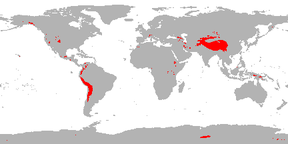 All continents (Asia, North and South America, Africa, Europe, the Ocean Islands and the Antarctica) have mountain ranges with peaks over 4000 m except Australia. While most of this ranges reach uncountable numbers of 4000 m peaks there are some well known 4000 m peak lists like the Colorado fourteeners of the USA or the 4000 m peak list of the European Alps.
All continents (Asia, North and South America, Africa, Europe, the Ocean Islands and the Antarctica) have mountain ranges with peaks over 4000 m except Australia. While most of this ranges reach uncountable numbers of 4000 m peaks there are some well known 4000 m peak lists like the Colorado fourteeners of the USA or the 4000 m peak list of the European Alps.
Three-Thousander (3000 meter peaks)
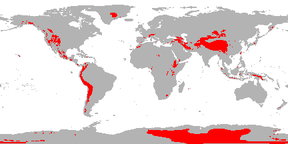 Mountains ranges with 3000 m peaks are located on every continent (Asia, North and South America, Africa, Europe, the Ocean Islands and the Antarctica) except Australia. Most of them reach uncountable numbers of peaks.
Mountains ranges with 3000 m peaks are located on every continent (Asia, North and South America, Africa, Europe, the Ocean Islands and the Antarctica) except Australia. Most of them reach uncountable numbers of peaks.
Two-Thousander (2000 meter peaks)
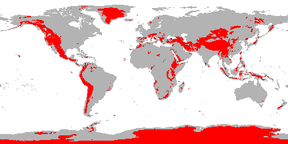 The Australian continent is the lowest-lying continent on Earth with Mount Kosciusko (2228 m) as its highest point. All peaks over 2000 m are located in the Great Dividing Range. Most of the 2000 m peak lists are mountain range specific or country specific. One example is the Norway peak list containing 291 peaks with an elevation of 2000 m above sea level and a topographic prominence of more than 10 meters. Increasing the topographic prominence to more than 50 meters shrinks the list to 186 peaks. So everything is a question of definition, but the highest point of Norway remains Galdhøpiggen with an elevation of 2469 m.
The Australian continent is the lowest-lying continent on Earth with Mount Kosciusko (2228 m) as its highest point. All peaks over 2000 m are located in the Great Dividing Range. Most of the 2000 m peak lists are mountain range specific or country specific. One example is the Norway peak list containing 291 peaks with an elevation of 2000 m above sea level and a topographic prominence of more than 10 meters. Increasing the topographic prominence to more than 50 meters shrinks the list to 186 peaks. So everything is a question of definition, but the highest point of Norway remains Galdhøpiggen with an elevation of 2469 m.
Thousander (1000 meter peaks)
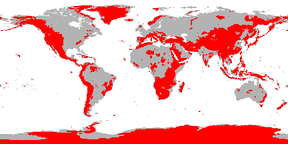 The most interesting 1000 m peak lists may be mountain range, country or province specific. Good examples are the list with 1000 m peaks of the Swabian Alb in Germany or the list of Scotland's highest mountains. Consider that the Swabian Alb peaks are highest points rather than peaks and that Scottish people most likely prefer the famous Munros peak list - including 284 Scottish mountains higher than 3000 feet - instead of dealing with lists based on the meter measuring system.
The most interesting 1000 m peak lists may be mountain range, country or province specific. Good examples are the list with 1000 m peaks of the Swabian Alb in Germany or the list of Scotland's highest mountains. Consider that the Swabian Alb peaks are highest points rather than peaks and that Scottish people most likely prefer the famous Munros peak list - including 284 Scottish mountains higher than 3000 feet - instead of dealing with lists based on the meter measuring system.
You might also like
What is a peak and when is a peak climbed?The question about what defines an official peak has plagued mountaineers for...
8000m peaks and subpeaksIn the web exist several pages listing the wellknown fourteen 8000m peaks - ...
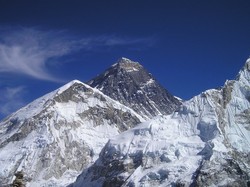










 8000m peaks and subpeakson 05/19/2011
8000m peaks and subpeakson 05/19/2011
 What is a peak and when is a peak climbed?on 05/04/2011
What is a peak and when is a peak climbed?on 05/04/2011
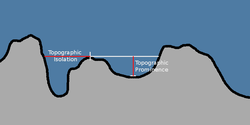

Comments
Well researched and well organized.
Great article
No I don't... ;-) My English is not so good that I can translate my articles to perfect English, but the main problem is not having any time. Even on pagewizz I stuck with 88 articles...
You really have no fear of heights do you? I didn't understand a word, but loved that photo viewing setup on your pages - and the photos, of course! Will we ever get that here at Wizzley?
Hi Dustytoes,
I have a lot of plans, but there is too much work at the moment. I would like to write some more articles here... If you want so see some photos have a look at http://pagewizz.com/pico-de-aneto-die... or http://pagewizz.com/auf-der-via-dell-...
These are some of my german articles :)
I know it's puny in comparison, but here in New Hampshire we have Mount Washington - it's our big mountain at over 6,000 feet ;)
I love to view your photos of the mountains on Pixabay, why didn't you add them here? Just curious.
I learned something here. Good page.
It's interesting to take a tour of the world from the perspective of the highest peaks. Thanks for being our tour guide!
Makes me think of Ed Viesters, who's climbed all of the world's 8,000-meter-plus peaks and without oxygen. I met him once - a lovely, humble man. And speaking of the world's tallest mountains, I was in Nepal last year, and my chin almost hit th ground when the clouds lifted and I saw the Himalayas for the first time. Oh ... my ... god. Amazing! (Your maps are really cool, by the way.)
I think I must have been an eagle in a past life as I love high peaks. I found the diagrams fascinating and must admit I'd never thought of Antarctica has being mountainous.
Here in Scotland we have some of the oldest mountains in the world. At first they didn't impress me as they are so eroded by time and I like the fresh, jagged peaks you see in the Alps, but they were once super volcanoes.
Mountains are amazing!